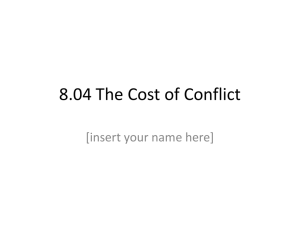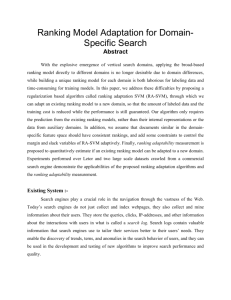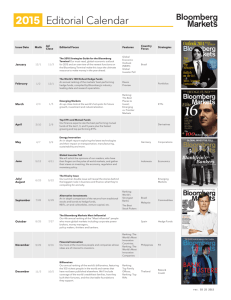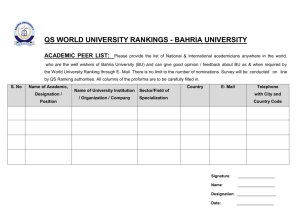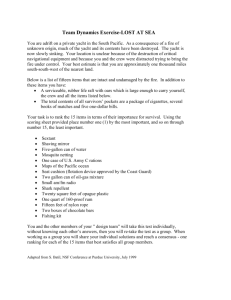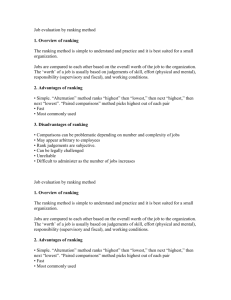Northeast Exotic Plant Working Group
advertisement
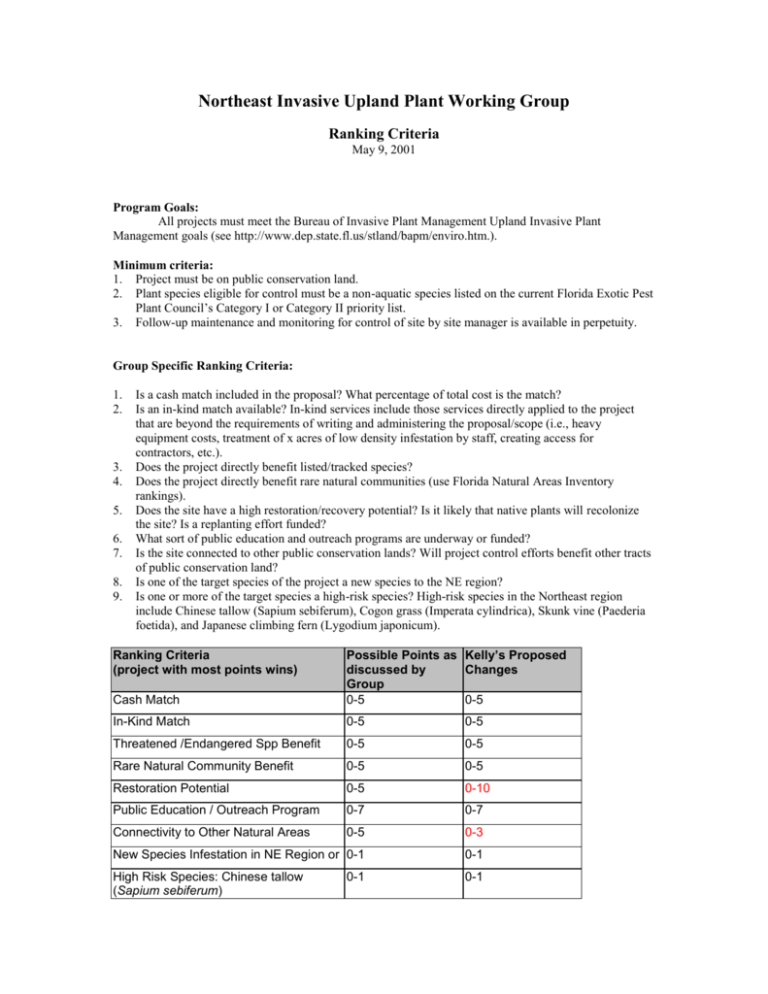
Northeast Invasive Upland Plant Working Group Ranking Criteria May 9, 2001 Program Goals: All projects must meet the Bureau of Invasive Plant Management Upland Invasive Plant Management goals (see http://www.dep.state.fl.us/stland/bapm/enviro.htm.). Minimum criteria: 1. Project must be on public conservation land. 2. Plant species eligible for control must be a non-aquatic species listed on the current Florida Exotic Pest Plant Council’s Category I or Category II priority list. 3. Follow-up maintenance and monitoring for control of site by site manager is available in perpetuity. Group Specific Ranking Criteria: 1. 2. 3. 4. 5. 6. 7. 8. 9. Is a cash match included in the proposal? What percentage of total cost is the match? Is an in-kind match available? In-kind services include those services directly applied to the project that are beyond the requirements of writing and administering the proposal/scope (i.e., heavy equipment costs, treatment of x acres of low density infestation by staff, creating access for contractors, etc.). Does the project directly benefit listed/tracked species? Does the project directly benefit rare natural communities (use Florida Natural Areas Inventory rankings). Does the site have a high restoration/recovery potential? Is it likely that native plants will recolonize the site? Is a replanting effort funded? What sort of public education and outreach programs are underway or funded? Is the site connected to other public conservation lands? Will project control efforts benefit other tracts of public conservation land? Is one of the target species of the project a new species to the NE region? Is one or more of the target species a high-risk species? High-risk species in the Northeast region include Chinese tallow (Sapium sebiferum), Cogon grass (Imperata cylindrica), Skunk vine (Paederia foetida), and Japanese climbing fern (Lygodium japonicum). Cash Match Possible Points as Kelly’s Proposed discussed by Changes Group 0-5 0-5 In-Kind Match 0-5 0-5 Threatened /Endangered Spp Benefit 0-5 0-5 Rare Natural Community Benefit 0-5 0-5 Restoration Potential 0-5 0-10 Public Education / Outreach Program 0-7 0-7 Connectivity to Other Natural Areas 0-5 0-3 New Species Infestation in NE Region or 0-1 0-1 High Risk Species: Chinese tallow (Sapium sebiferum) 0-1 Ranking Criteria (project with most points wins) 0-1 High Risk Species: Cogon grass (Imperata cylindrica) High Risk Species: Skunk vine (Paederia foetida) High Risk Species Japanese climbing fern (Lygodium japonicum) TOTAL 0-1 0-1 0-1 0-1 0-1 0-1 42 45 Administrative note for Liaisons: Ranking Sub-committee: Proposals will be submitted electronically to the liaison by the due date. The liaison will distribute proposals to the ranking sub-committee as soon as possible after receipt. The annual meeting where formal ranks are assigned will occur approximately 2 weeks after the proposal due date. Everyone who submits a proposal will serve on the sub-committee and rank all proposals excluding their own. Others may serve on the ranking committee if they wish. Presently, Joe Hinkle, DEP BIPM Aquatic Plant Management, serves on the ranking subcommittee and has agreed to carry out the ranking procedure. Ranking procedure: At the annual meeting, after short discussions about each proposal each member scores each proposal. Then each member determines the ranks of the proposal based on total points with more points translating to a higher-ranking (1 being the highest ranking). The group then determines the overall ranks of each proposal by averaging the rank orders over members for each proposal with the lowest rank order score getting the highest priority for funding. In the case of a tie of average rank order scores, total raw points will determine the higher priority project. In case of a further tie, priority order of projects will be determined by a flip of a coin.
